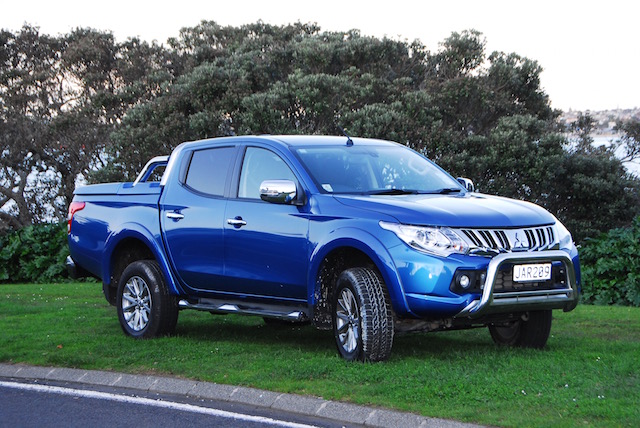
I went to Japan in late 2005 to drive the fourth-generation Triton. I expected the usual route for a ute: a beat over mix of good and bad roads and some 4WD work.
Instead, Mitsubishi confined the drive to its high-speed banked test circuit. Why? Because it said it wanted to show the double-cab test ute was underpinned by a chassis that showed car-like characteristics.
It quickly halted talk about the radically different look with: “Yes, but wait till you drive it.” Anyway, the ute turned out to be pretty well behaved, sweeping up and down the banked circuit at 130-140km/h, lap after lap.
But the polarising new design always headed conversation, even after Mitsubishi’s senior Japanese executives said the company forecast huge growth in the ute sector beyond 2005 and wanted a new look to appeal to a new audience.
Fast forward to 2015 and Mitsubishi was certainly right about the growth, although it can claim only that Triton played a small part.
The carmaker has stayed away from the bigger is better argument and stuck to a footprint for the fifth-generation Triton that is smaller than opposition utes. One advantage here is the turning circle: the Triton’s 11.8m is class leading.
The new model might look a bit like its predecessor here and there but there’s much more going on under the skin. For starters, the chassis has been reworked all over again.
Revised suspension settings up front and longer leaf springs at the rear have improved the double-cab 4WD Triton’s ride and handling. It corners flatter and is more forgiving over bad surfaces. The longer rear springs help the ute track better when unladen, without affecting its load-carrying ability.
Inside, the cabin offers more of a car-like feel. The seats seem more supportive and there’s more room for occupants. Leg and shoulder room in the front passenger seat is especially good. Another plus: the steering wheel can be adjusted for tilt and reach.
The new four-cylinder 2.4-litre turbodiesel engine is smoother, quieter, easier on fuel, and delivers more power and torque than the outgoing 2.5-litre engine. Mitsubishi claims a fuel best of 7.6-litres/100km for the two-wheel-drive Triton; the 4WD will of course consume more.
A six-speed manual gearbox is new too. It seems a sweeter match than the five-speed automatic, especially under a light throttle and in 4WD. There’s not much in it – the five-speed auto is older but the sales figures show seven out of 10 new Triton buyers still prefer it.
Triton’s braked towing capacity of 3100kg can’t match it with the bigger boys’ limit of 3500kg. But its 960kg payload isn’t far off the mark, despite most of the tray being behind the line of the rear axle.
Going from 2WD to 4WD using Mitsi’s Super Select system is done via a rotary dial. The system works with a centre differential. It’s simple and effective. You can drive Triton in 4WD on a sealed road with the diff open, or have it locked when the going gets especially sticky.
Triton is priced between $34,790 for the 2WD manual and $59,490 for the premium 4WD automatic. In terms of value for money, it’s pretty hard to beat.
